Just before Christmas, I received the three prototype boards for revision 6A from OSH. The boards look great, but I wasn't able to construct one until yesterday evening.
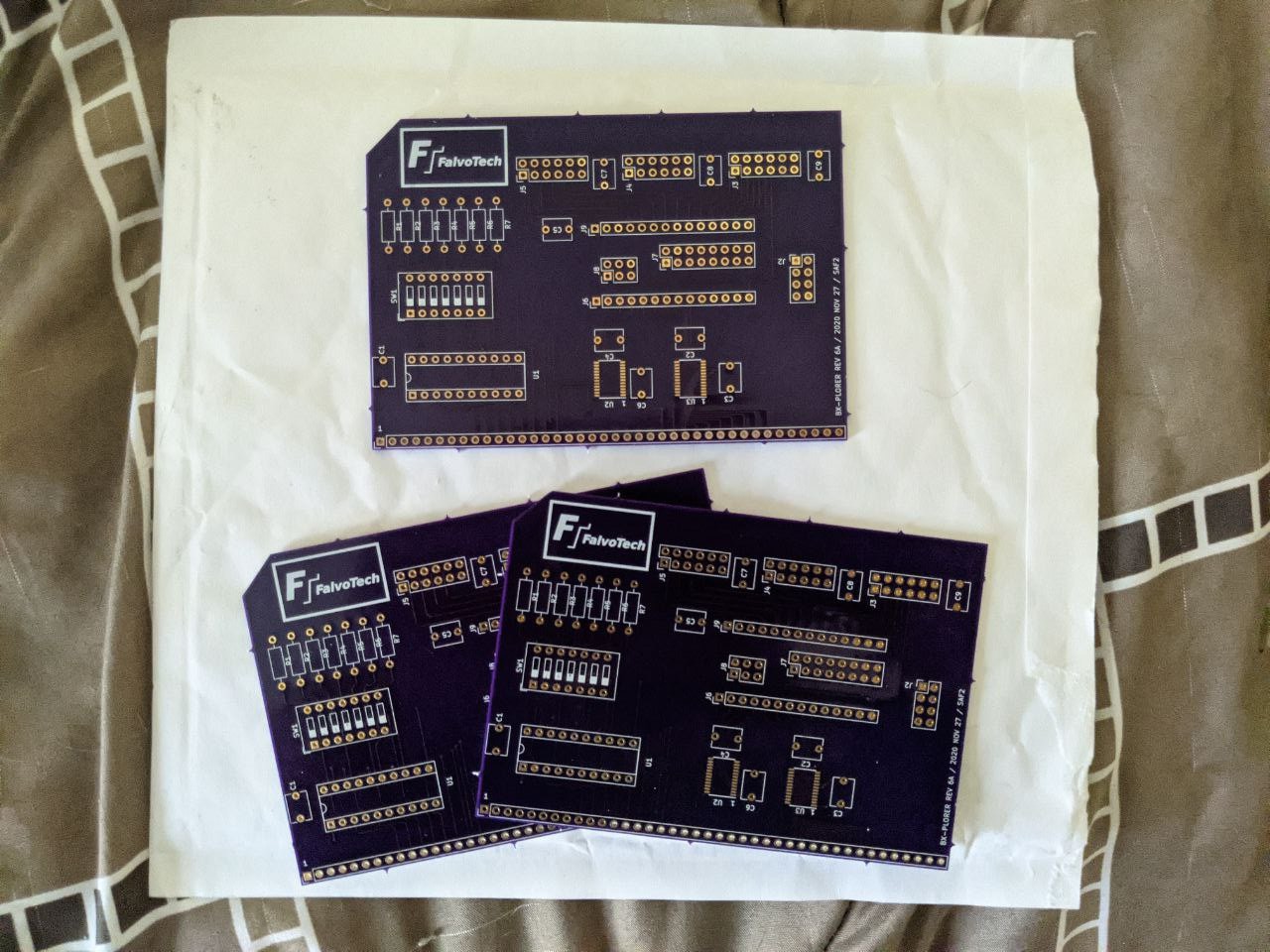
Assembly went ... not quite as smoothly as I'd've liked for the first board I tried. It was a bit colder in the garage than I'd've liked, but the solder hated it more than I did. While attempting to drag-solder the 74LVC8T245PWR chips onto the board, no matter how much solder I used to flood the pins, it refused to make a clean solder joint. Wicking the solder just wasn't working well, so I tried to apply a bit more pressure. While that worked to get the solder hot enough to wick, it also bent the pins of the chips, and ... yeah. Lesson learned: do not drag-solder when your workspace is cold.
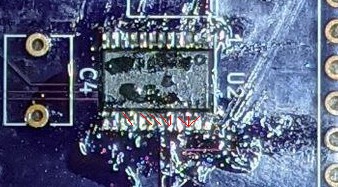
(note the red lines showing where the pins got crushed together.)
After refining my technique to use tack-soldering instead, and making sure to wick excess solder pulling away from the chip instead of trying to sop all the excess in one fell swoop by dragging the wick across the pins, construction went relatively smoothly. I completed the build of the 2nd prototype card in about six hours.
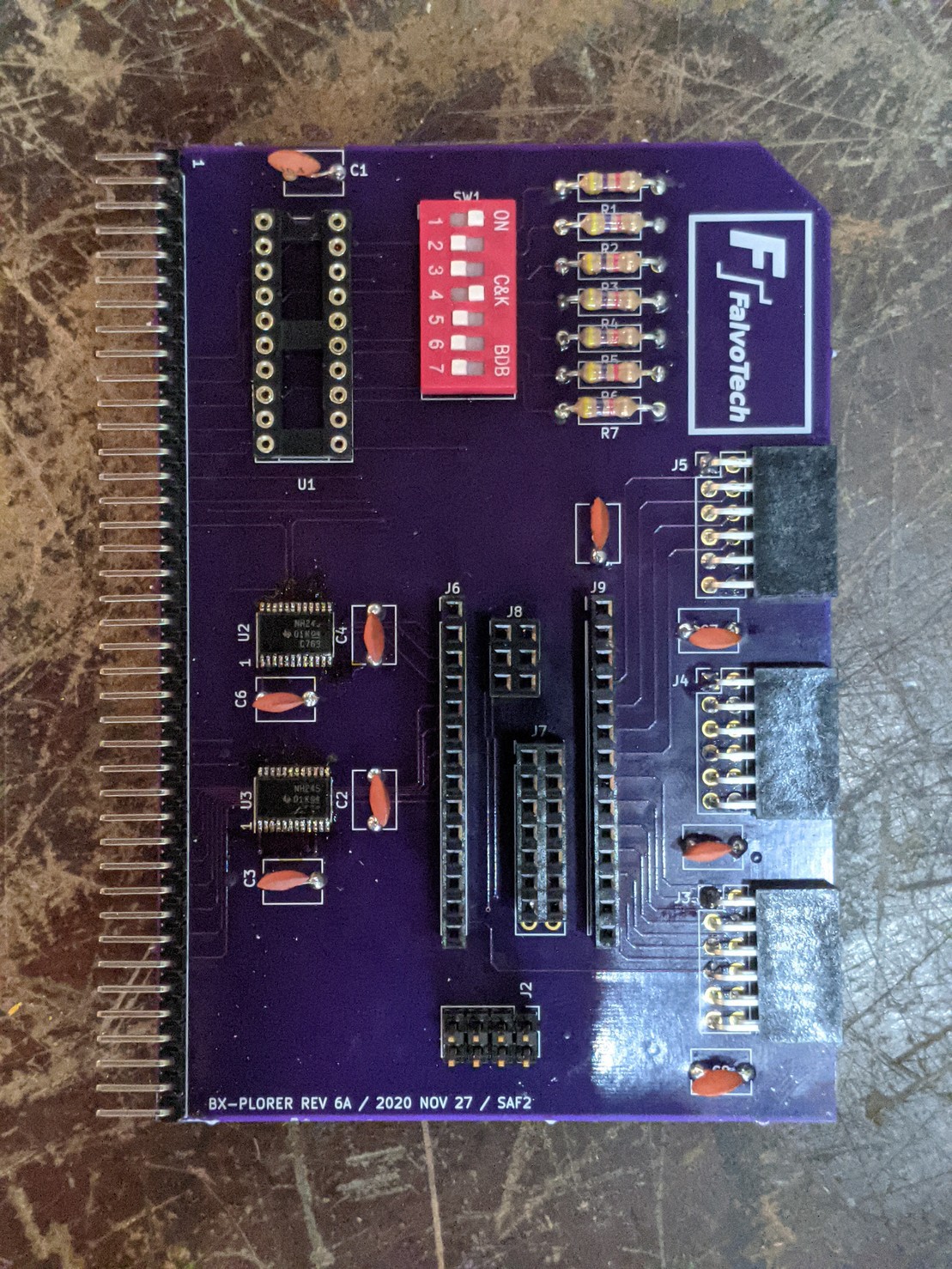
After fitting a TinyFPGA BX module to the card, I was able to use it as a proper VDC-II card by routing wires over to a breadboard with a resistive DAC on it.
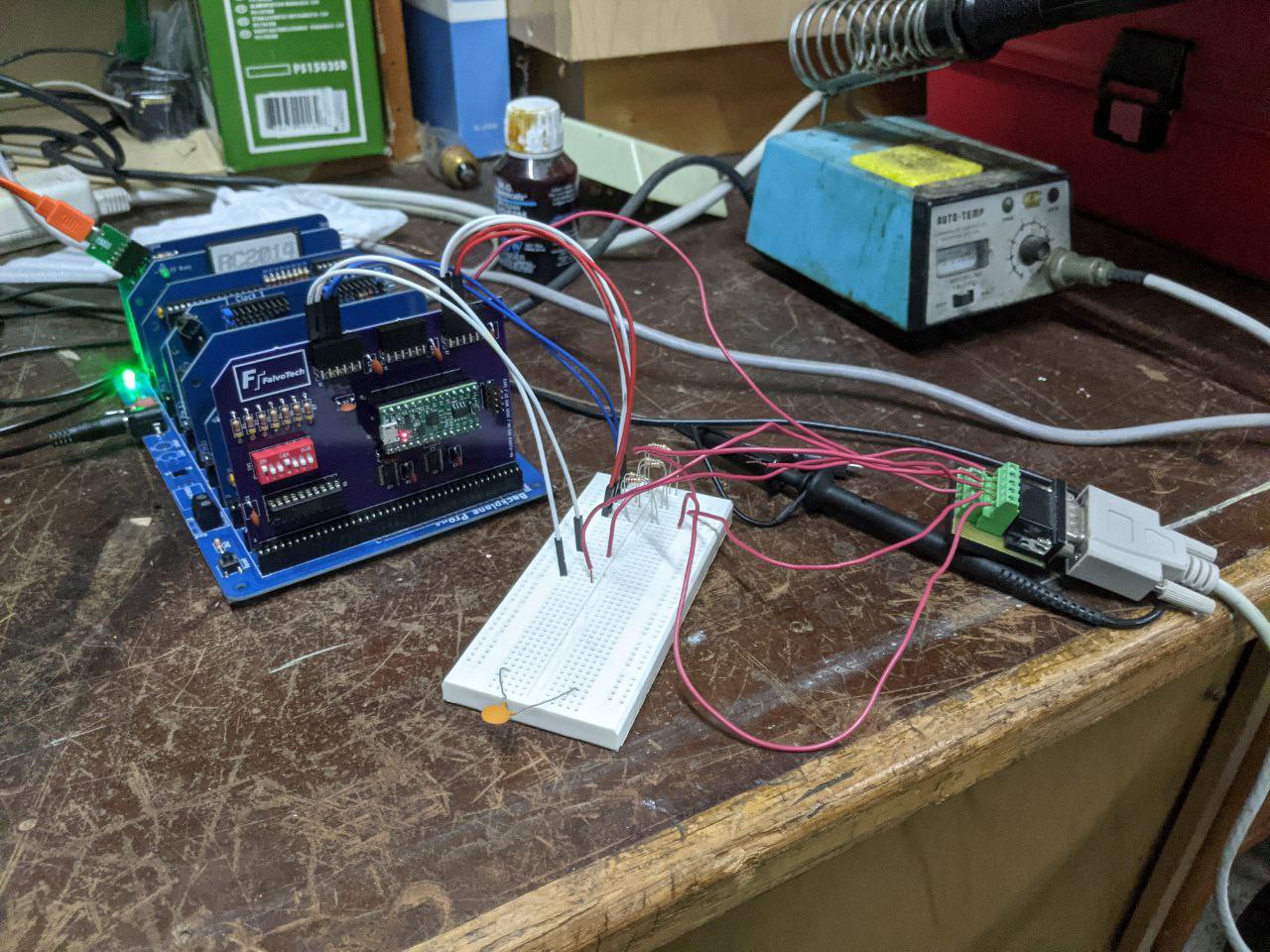
I ran the old clock demo I'd written some time ago, and it runs perfectly. (A more advanced demonstration which puts the VDC-II into bitmapped graphics mode is still under development as I write this.)
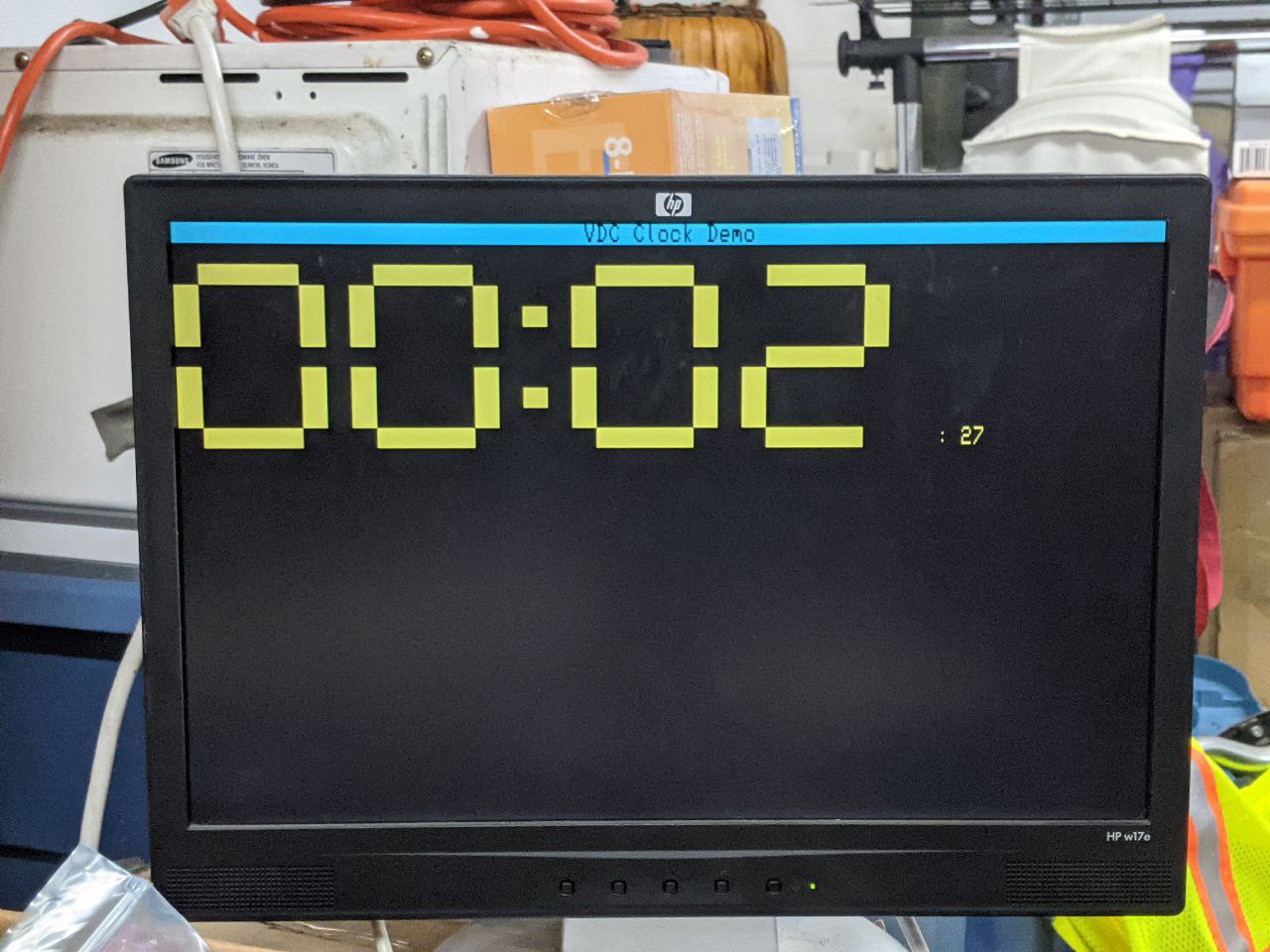
Next steps include:
- Double-check and make sure the extra I/Os exposed by the new Rev 6A board have continuity. If they do not, it'll be because of how I soldered the connectors to the bottom of the TinyFPGA BX module, and not due to a wiring issue on the 6A board. (I already checked the latter, and they seem to work as far as I could tell.)
- Begin the process of seeking Crowd Supply feedback.
- Continue working on the VDC-II font editor tool. I've neglected to post updates here mainly because I never seem to make big enough progress with it; that, and I'm coding it on a Commodore 128 emulator for convenience. But, I suppose I will start posting software updates here too, as eventually, this software will be ported over to the RC2014. The VDC and VDC-II parts will need somewhat different initialization logic, but once initialized, they should behave identically. So, having the C128 version handy as a reference implementation will be useful.
 Samuel A. Falvo II
Samuel A. Falvo II
Discussions
Become a Hackaday.io Member
Create an account to leave a comment. Already have an account? Log In.